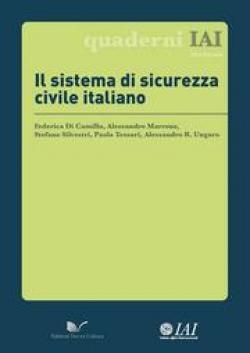Il sistema di sicurezza civile italiano
Civil security is an increasingly important policy field in Europe, as both member states and the EU work to protect European societies from a range of threats and risks including natural and man-made disasters as well as terrorist attacks. Over time, each European country has developed a unique civil security system based on its national specificities, which interacts with both neighbour countries and the Union. This research paper analyses the Italian case on the basis of four analytical dimensions: cultural and historical aspects, legal aspects, the relation between the civil security system and citizens, the role of private sector. Three critical qualitative measures of the system are also discussed: effectiveness, efficiency and legitimacy. In addition, because of the importance of international cooperation and EU role in this field, the relations between the Italian security system and the European contest context are addressed. Specific attention has been devoted to the way the system responded to the earthquake in L'Aquila and the pandemic influenza A (H1N1), both occurred in 2009, as major crises faced in the last decade. In particular, the L'Aquila case study has underlined both strengths and weaknesses of the way the system does function. Several key points of the Italian civil security system have been identified, such as the flexible cooperation among institutional actors, the issue of levels of governance, the role of changing legal frameworks, the contribution of non-profit organizations.
Study produced within the framework of the project Analysis of Civil Security Systems in Europe (ANVIL), financially supported by the European Union 7th Framework Programme.
English version: IAI Research Paper 11.
-
Details
Roma, Nuova Cultura, February 2014, 116 p. -
In:
-
Issue
8 -
ISBN/ISSN/DOI:
978-88-6812-266-9
Executive Summary, p. 9-12
Introduzione, p. 13-17
1. Quadro generale, p. 19-25
2. Aspetti storici e culturali, p. 27-31
2.1. Tradizione amministrativa
2.2 Cultura sociale
3. Aspetti istituzionali, p. 33-54
3.1 Dimensione legale
3.2 Dimensione operativa
3.3 Dimensione esterna
4. Rapporto con i cittadini, p. 55-61
4.1 Aspettative
4.2 Informazione
4.3 Istruzione
5. Ruolo della società civile, p. 63-67
5.1 Ruolo delle organizzazioni di volontariato
5.2 Ruolo del settore privato
6. Indicatori di qualità: efficacia, p. 69-74
7. Indicatori di qualità: efficienza, p. 75-77
8. Indicatori di qualità: legittimità, p. 79-83
8.1 Elemento politico
8.2 Elemento giuridico
8.3 Opinione pubblica
9. Il sistema italiano nel contesto europeo, p. 85-89
Conclusioni, p. 91-99
Bibliografia, p. 101-115
Lista di interviste, p. 116
Topic
Tag
Related content
-
Event14/04/2014
Il sistema di sicurezza civile in Italia
leggi tutto -
Publication23/03/2014
The Italian Civil Security System
leggi tutto -
Ricerca08/01/2014
ANVIL - Analysis of Civil Security Systems in Europe FP7-SEC2010
leggi tutto



